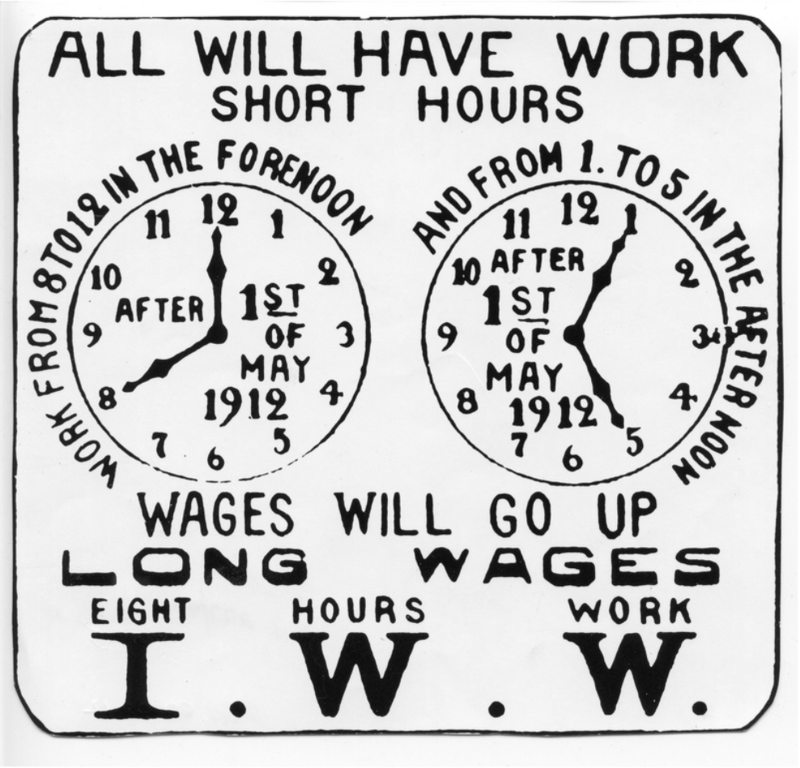League of Nations Series: Biggest Successes of the League of Nations
Foreword
The League of Nations Series is a series that historically analyze the work of the League of Nations. The League of Nations was the first international organization that aimed to control international affairs, and in order to achieve that, it launched its own international bureaucracy. Through its main organs (the Secretariat, the Assembly and the Council), it was able to form a new, multilateral system by the end of the 1920s.
The League of Nations series' aim is to examine the system-level operations, the possible strategies used by state representations and the activities of the people that were operating the system or intended to prevail in it, as well as to find the place of the League of Nations in the history of diplomacy and international institutions.
The series is divided into the following chapters:
1. A New Spirit
7. Biggest Successes of the League of Nations
League of Nations Series: Biggest Successes of the League of Nations
There is a strong connection between pacifism, international law and the successes of the League of Nations, whose staff members were real idealists trying to create a better world. Thanks to the help of its specialized agencies, the League could achieve lots of accomplishments, as well as catalyse claims that already existed before its birth. Such was the maximization of working hours carried out by the International Labour Organization step by step: in 1919, the first convention of ILO limited hours of work and provided adequate rest periods for workers. In 1930, another convention set the general standard at 48 regular hours of work per week, with a maximum of eight hours per day, while in 1935, another convention created the forty-hour week system (International Labour Organization, 2022).
The League accomplished successes worldwide in the fields of law enforcement, health, and education. Through its Opium Commission, it managed to control drug trafficking and worked on implementing an international system of drug control (Br Med J, 1922).
The Health Committee of the League examined healthcare questions and provided recommendations and international standards for various topics: new therapeutic agents, pharmacology, vitamins, rural hygiene, housing, epidemics, physical education, nutrition, drugs, etc. The international staff of the Committee worked together with scientists and experts from all over the world to provide recommendations so the countries could adopt them, which meant a huge development in the field of health care (Health Committee, 1938, 141, 280).
The League also dealt with the suppression of human trafficking and the protection of women and children by creating the Advisory Committees (Advisory on the Traffic in Women and Protection of Children, 1925); adopting international conventions (1921 International Convention) and implementing special programs (Snow, 1926) to achieve major improvements.
The Secretariat’s Social Section, which was led by the well-known British nurse Dame Rachel Eleanor Crowdy, also fought for the abolition of the slave trade, which mostly affected girls (United Nations Archives, 2022).
This kind of humanitarian work was even more developed thanks to the support of the Red Cross and its aim to take part in humanitarian diplomacy: during the first years of the 1920s, inter-organizational cooperation arose between these organizations to deal with the aftermath of World War I and to control other humanitarian crises (Palmieri, 2014).
One of the most known achievements of the League related to humanitarian work was the creation of a new passport. The League of Nations Passport, better known as the ‘Nansen passport’, was an identification card for displaced persons issued by the League in 1922. The implementation of a special passport was done to help the millions of Armenian and Russian refugees who had been deprived of their nationality (Gatrell, 2022).
In the same year, Fridtjof Nansen, the Norwegian humanitarian worker after whom the passport is popularly named, was awarded the Nobel Peace Prize (Sverdrup, 2022).
This kind of organizational work is the greatest success of the League of Nations, as it was implemented in the fields of science and international relations. Yet the League had other political duties as well.
The League of Nations required its member states to implement a new form of dispute resolution: in order to submit their debates to the League, the affiliate had to provide a forum for peaceful disputes and talks (Hathaway, Oona and Shapiro, 2017). Although it was clear even to peers that on the political level, this could not be successful, there were some achievements in this field as well.
Concerning state interests, the League controlled border disputes between smaller nations after World War I: although it set up commissions to examine the question, the League preferred to leave the actual decisions to bilateral talks between the sides. Thus, in this matter, the League rather worked as an organization that was binding states to make peaceful agreements.
Wider cooperation and actual decision-making were needed to control the bad financial state of many countries. The economic and financial reconstruction of the defeated countries (Austria, Hungary, Bulgaria, etc.) was truly a huge task achieved by the League and the Secretariat’s financial department. The League was much more successful in this area than in the field of minority issues. While the minority issue has moved many politically opposed parties, all countries had an interest in the economic stabilization of states that had lost and were obliged to pay reparation (Magyar Nemzeti Levéltár Országos Levéltár). Thus, these nations turned to the League of Nations for a loan. After signing the protocol that defined the details of the loans, the League of Nations sent a Commissioner-General to the capital of the beneficiary country to conduct the financial audit of the loan and the nation's economic and financial reconstruction. In the case of Hungary, the position of Commissioner-General was occupied by Jeremiah Smith Jr. of the United States, who also had a deputy: Royall Tyler, also from the United States.

They reported monthly to the Council until the recognition of the country’s financial stability and the end of financial control. In the case of Hungary, financial reconstruction proceeded quickly (it took only two years) and smoothly, and it was completed by 1926. Due to the loan provided by the League, the country not only managed to balance its budget but even produced a surplus. Inflation ceased, the currency stabilized, the Hungarian National Bank was established, foreign capital inflows started, and household savings started to increase.
It was a success story – both in the cases of Austria and Hungary – which was not only considered an outstanding achievement by the two economically stabilized countries, but the League of Nations was also proud of it. It is still considered one of the most important accomplishments that have been achieved to date.
It is much harder to find actual political successes performed by the League. After World War I, the question of minority protection became worldwide due to the Minorities Section of the Secretariat. Although the Section really tried to achieve as much as possible (Varga, 2021), the system was designed to provide minimum enforcement of the treaties (Fink, 1995). As for the level of political gain, the picture was different.
It is well-known that the League failed to control the vast majority of political debates and crises. However, it had some smaller achievements: it resolved the disputes of Sweden and Finland over the Aland Islands in 1920-21, guaranteed the security of Albania in 1921, settled the division of Upper Silesia in 1922, and was able to prevent war between Greece and Bulgaria in 1925 (Columbia Electronic Encyclopedia, 2022).
All in all, the successes of the League can be attached to specific types of cases: in the field of scientific cooperation, law enforcement and handling different problems that affected more countries (workers’ rights, child protection, healthcare etc.), the organization had a huge role and could achieve significant breakthroughs. With that, it was able to impact people’s lifestyles and had a huge role in creating a higher quality of life.
Regarding its political achievements, the organization was successful in cases such as financial reconstructions, the issues regarding fragmented railways and smaller border disputes. In relation to actual political disputes between countries (such as minority issues and matters of financial control and military control), the cases turned out to be too complex, as there were too many stakeholders representing different sides and interests that could not be controlled by the League. In the system of the League of Nations, such matters could drag on for a long time without a real solution.
Bibliographical References
1921 International Convention for the Suppression of the Traffic in Women and Children. New York, 12 November 1947. European Commission: Together Against Trafficking in Human Beings. https://ec.europa.eu/anti-trafficking/1921-international-convention-suppression-traffic-women-and-children_en
Br Med J. (1922). The Opium Commission of the League of Nations. https://www.bmj.com/content/1/3201/724.2
Fink, C. (1995). The League of Nations and the Minorities Question. World Affairs, 157(4), 197-205.
Gatrell, P. (2017). The Nansen passport: the innovative response to the refugee crisis that followed the Russian Revolution. The Conversation. https://theconversation.com/the-nansen-passport-the-innovative-response-to-the-refugee-crisis-that-followed-the-russian-revolution-85487
Hathaway, O. A., & Shapiro, S. J. (2017). The Internationalists. How a Radical Plan to Outlaw War Remade the World. Simon & Schuster.
Health Committee. (1938). Health Committee of the League of Nations. Nature. https://www.nature.com/articles/141280b0
ILO. 2022: International Labour Standards on Working time. https://www.ilo.org/global/standards/subjects-covered-by-international-labour-standards/working-time/lang--en/index.htm
League of Nations. (1925) Advisory Committee on the Traffic in Women and Protection of Children. Report of the Fourth Session. May 1925. https://biblio-archive.unog.ch/Dateien/CouncilDocs/C-293-(1)-1925-IV_EN.pdf
Magyar Nemzeti Levéltár Országos Levéltár. Note on the loan provided by the League to Hungary.
Author, place and time unknown. Hungarian National Archives – State Archives (MNL OL) K 78 8. cs. II/3.
Palmieri, D. (2014). The International Committee of the Red Cross in the First World War. ICRC. https://www.icrc.org/en/document/international-committee-red-cross-first-world-war-0
Snow, W. F. (1926). The Program of the League of Nations Advisory Committee on the Traffic in Women and the Protection and Welfare of Children and Young People. Proceedings of the Academy of Political Science in the City of New York, 12 (1), 411-417.
Sverdrup, H. U. (2022). Fridtjof Nansen. Britannica. https://www.britannica.com/biography/Fridtjof-Nansen
The Columbia Electronic Encyclopedia, 6th ed. League of Nations: Successes and Failures. https://www.infoplease.com/encyclopedia/social-science/government/un/league-of-nations/successes-and-failures#:~:text=The%20League%20quickly%20proved%20its,Balkans%20between%20Greece%20and%20Bulgaria
United Nations Archives. Women and Global Diplomacy: From Peace Movements to the United Nations.
United Nations Research Guides. https://libraryresources.unog.ch/womendiplomacy/traffic
Varga, L. (2021). Magyar képviselet a Népszövetségben az 1920-as években. PhD Thesis.










Very interesting article. History always remember the failures but often forgets the small successes.